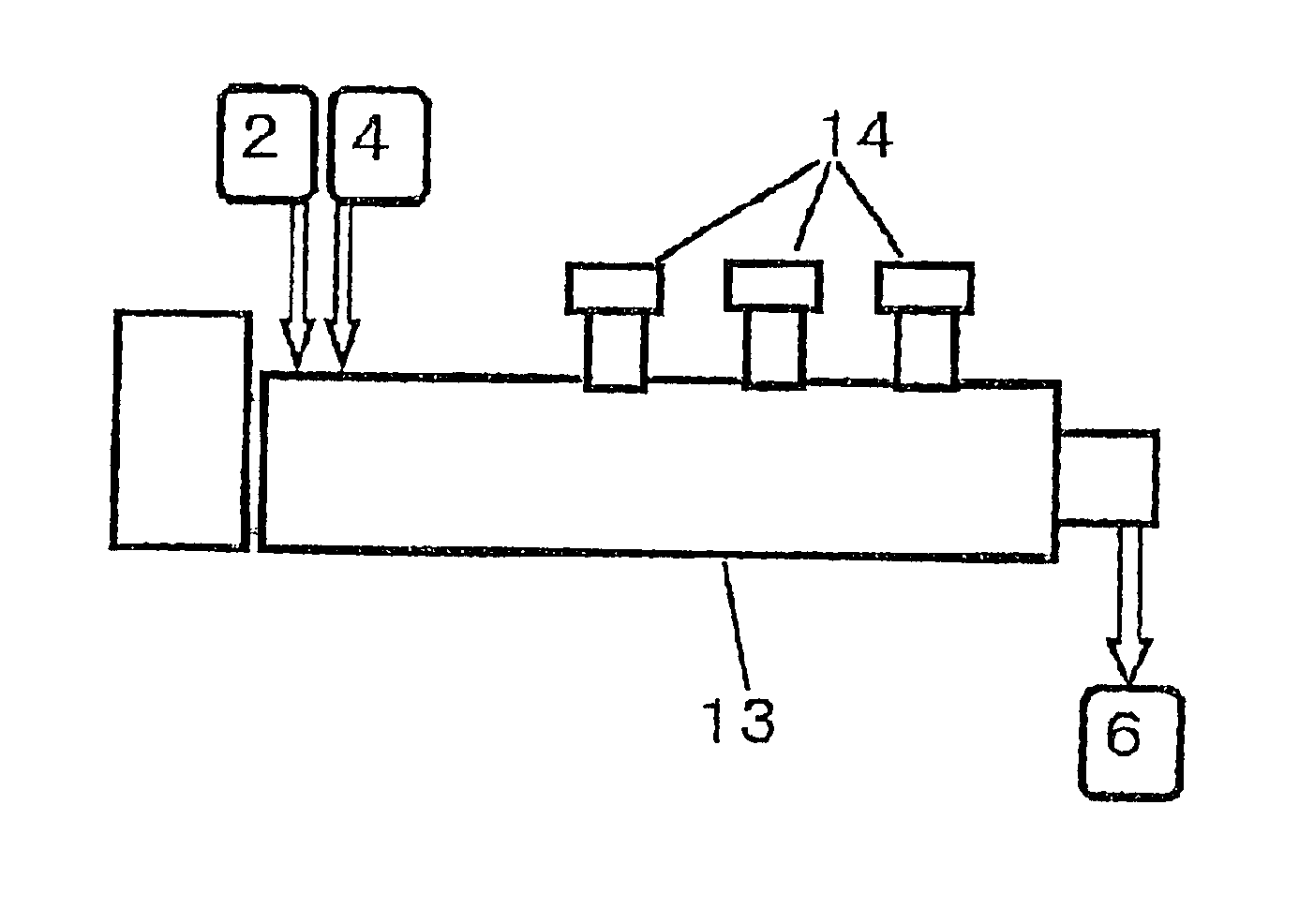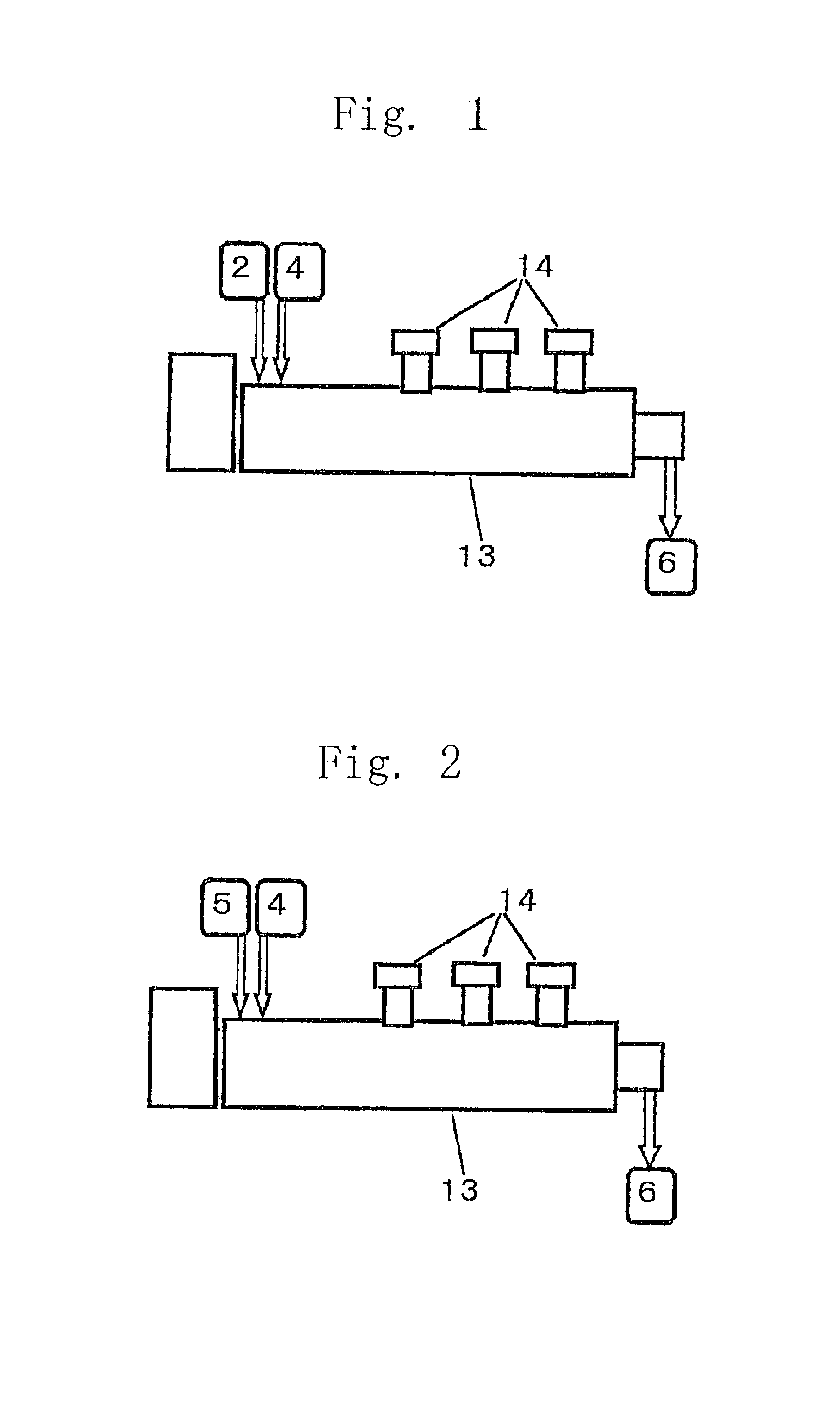Method of producing powdery coating material
a coating material and powder technology, applied in the direction of coatings, etc., can solve the problems of difficult homogeneous dispersing of resin and curing agent, lack of smoothness, appearance, etc., and achieve excellent smoothness and luster, and low cost
- Summary
- Abstract
- Description
- Claims
- Application Information
AI Technical Summary
Benefits of technology
Problems solved by technology
Method used
Image
Examples
example 1
[0097]120 Parts of isopropanol were fed into a reactor equipped with a thermometer, a stirrer, a reflux cooler, a pressure adjustor using nitrogen and a bottom drain pipe, and were heated at 110° C., and to which were further added:[0098]40 parts of methyl methacrylate,[0099]30 parts of glycidyl methacrylate,[0100]15 parts of styrene,[0101]15 parts of n-butyl methacrylate, and[0102]4 parts of t-amylperoxyisononanoate,
over a period of two hours, and were maintained at the above temperature for three hours to obtain an alcohol solution of a curable acrylic resin (hereinafter called resin solution).[0103]Separately,[0104]22 parts of dodecanoic diacid (curing agent),[0105]0.6 parts of benzoin, and[0106]0.6 parts of PL-540 (fluidity adjusting agent manufactured by Kusumoto Kasei Co.),
were mixed together to prepare a curing agent-containing mixture.
[0107]The resin solution and the curing agent-containing mixture prepared above were homogeneously mixed together within a short period of tim...
example 2
[0111]A resin solution was prepared in the same manner as in Example 1 but using the polymerization-solvent in an amount of 70 parts and the t-amylperoxyisononanoate in an amount of 6 parts.
[0112]A powdery coating material was prepared in the same manner as in Example 1 but using the above resin solution, preparing an alcohol solution of the curing agent (hereinafter called curing agent solution) by using the above resin solution and by adding 50 parts of methanol to the curing agent-containing mixture, wet-mixing them together by using an in-line mixer and feeding the mixture into the extruder with a vent. The powdery coating material and a film formed therefrom were evaluated for their properties. Table 1 shows the results together with the properties of the obtained curable acrylic resin.
example 3
[0113]An acrylic resin solution was prepared in the same manner as in Example 1 but using 120 parts of ethanol as the polymerization-solvent and changing the polymerization temperature into 90° C.
[0114]A powdery coating material was prepared in the same manner as in Example 2 but using the above acrylic resin solution and adding 50 parts of ethanol to the curing agent-containing mixture. The powdery coating material and a film thereof were evaluated for their properties. Table 1 shows the results together with the properties of the obtained curable acrylic resin.
PUM
| Property | Measurement | Unit |
|---|---|---|
| boiling point | aaaaa | aaaaa |
| temperature | aaaaa | aaaaa |
| boiling point | aaaaa | aaaaa |
Abstract
Description
Claims
Application Information
 Login to View More
Login to View More - R&D
- Intellectual Property
- Life Sciences
- Materials
- Tech Scout
- Unparalleled Data Quality
- Higher Quality Content
- 60% Fewer Hallucinations
Browse by: Latest US Patents, China's latest patents, Technical Efficacy Thesaurus, Application Domain, Technology Topic, Popular Technical Reports.
© 2025 PatSnap. All rights reserved.Legal|Privacy policy|Modern Slavery Act Transparency Statement|Sitemap|About US| Contact US: help@patsnap.com



